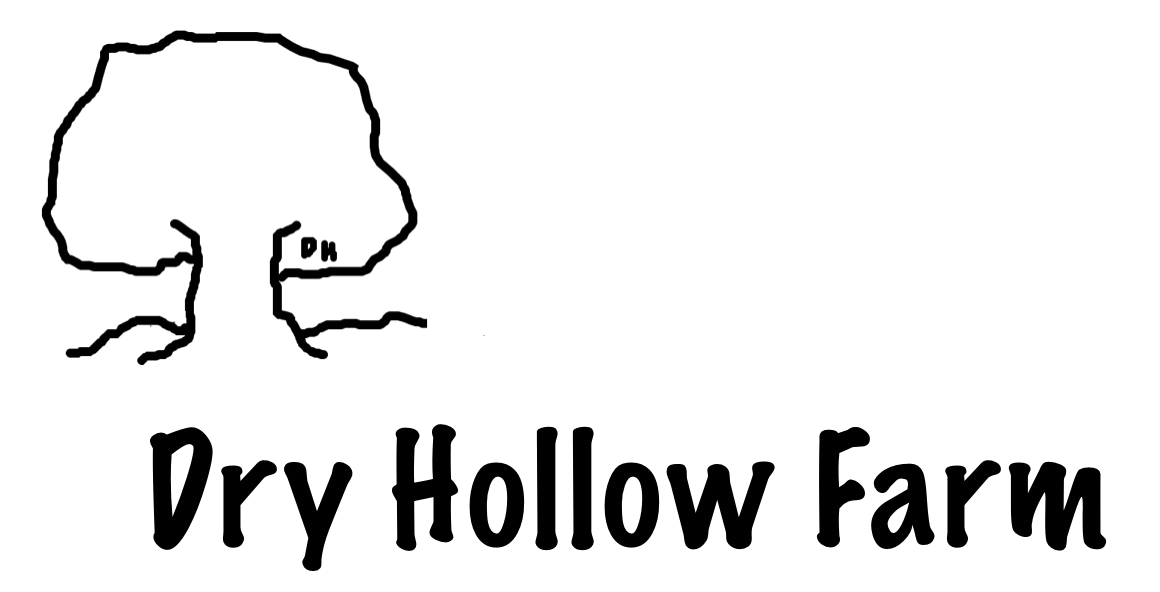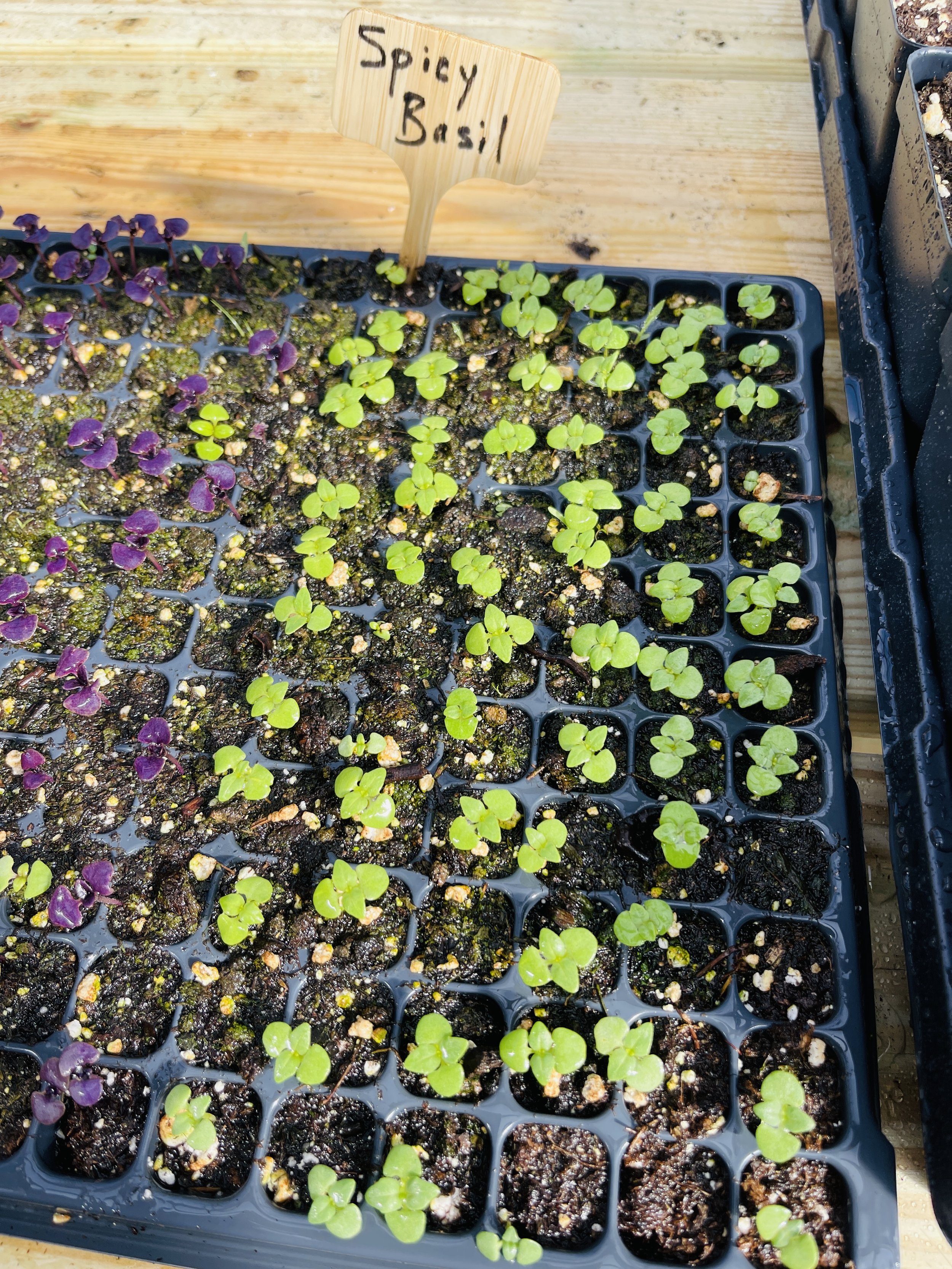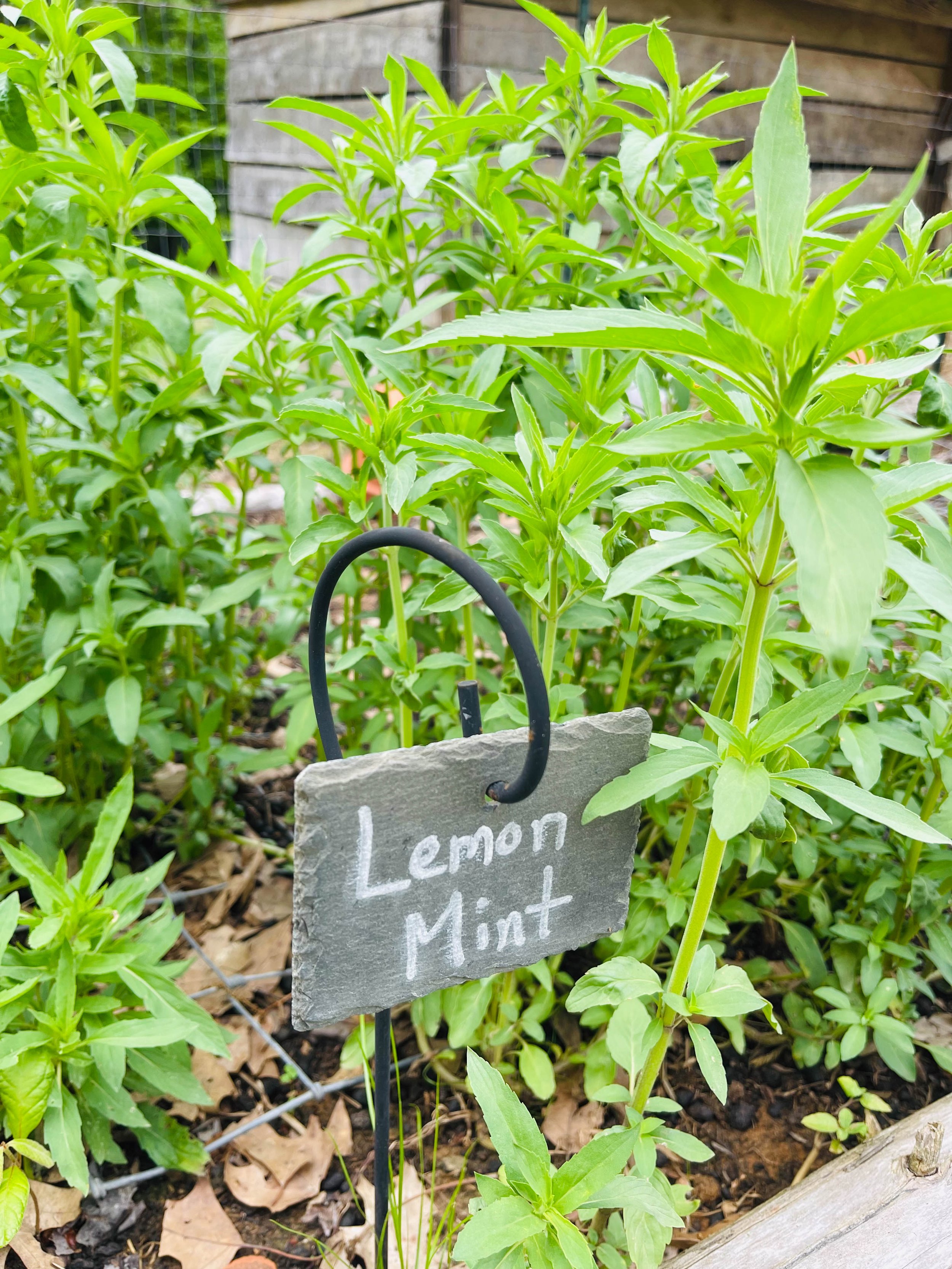Our Multi-Purpose Greenhouses
Our primary reason for building two greenhouses was the obvious one -
starting seeds and nurturing plants when outdoor temperatures fall.
Watching seeds sprout, transplanting tiny seedlings into singular pots, and moving them into outdoor beds once spring finally arrives is especially fulfilling. Our last frost date is April 15th, and we try and have as many plants available for purchase and planting as possible by that time.
As summer draws near, we discover that the pleasant warmth of the greenhouses in winter has evolved into the sweltering, breathtaking heat of hot, sunny days. The greenhouse thermometer no longer registers an indoor temperature because the gauge doesn’t go that high.
Our Herb Shack, with automatic fan and windows on all sides, is manageable as long as we provide enough water. However, most of my transplanting chores I leave until early evening as the sun drops behind the tallest tree tops.
Our lean-to greenhouse also possesses an automated fan system, but here the heat lingers. As we near the beginning of summer, we shift its purpose from growing plants to drying things - herbs, gourds, and sheep wool.
This week we began harvesting our first organically-grown herbs of the season. Most of our herbs we dry before using them to handcraft infused oils, herbal salves, herbal goat milk soaps, or sell as herbal teas.
Our first harvested herb this year is Lemon Mint, but other mint varieties, Lemon Balm, Chervil, Epazote, and Yarrow will soon follow. From this point on, harvesting occurs every week as many of our herb plants continue growing and producing throughout the summer and fall.
Once the herbs have dried, our greenhouses begin hosting jars of infused sunflower oil placed in the sunniest location. We allow the sun to heat and naturally infuse the oil over several weeks until we strain and bottle for selling in the Soap Shack.
We wash fleece regularly throughout the year from the previous spring shearing, and a washed fleece can take at least two full days of warm heat to dry. Our greenhouses not only provide lots of solar heat, but also allow us to protect the drying fleece from dog and cat critters who absolutely love rolling in it.
Our greenhouses also provides space in late fall for drying the variety of gourds we grow at Dry Hollow Farm. Although we need to monitor humidity levels once winter sets in, most gourds will dry quickly and efficiently.
With each greenhouse purchase, we were thrilled with our expanded growing capabilities and sales potential. However, we were also pleasantly surprised to discover the many additional uses for these spaces. For small farms and homesteads, space is premium. Exploring multiple uses for each area is paramount for maximizing output.
Dr. Kathryn Bush owns and operates Dry Hollow Farm, a working goat and sheep farm in Huntingdon, Tennessee. Together with her husband, Russell, she creates skincare products from their fresh goat milk, grows organic herbs, welcomes visitors to their two cabins on the farm (available for stays through Airbnb), keeps the farm’s on-site soap shop stocked with their handcrafted products, and enjoys working the farm in company with their Great Pyrenees dogs (who work hard guarding the animals). Check out their natural products featuring farm-grown ingredients here, and sign up for the Dry Hollow Farm newsletter to stay in touch and be the first to hear about farm news, events, and new products.










